Vachellia sekhukhuniensis
Vachellia sekhukhuniensis (P.J.H.Hurter) Kyal. & Boatwr.
Family: Fabaceae
Common names: Sekhukhune thorn (Eng.), moletla (Sepedi)
SA Tree No: 184.5
Introduction
Having the largest leaflets, that distinguishes it from all the vachellias, the Sekhukhune thorn is only known to occur in a small location in Sekhukhuneland that is being rapidly transformed by subsistence farming, putting it at risk of extinction in the near future.
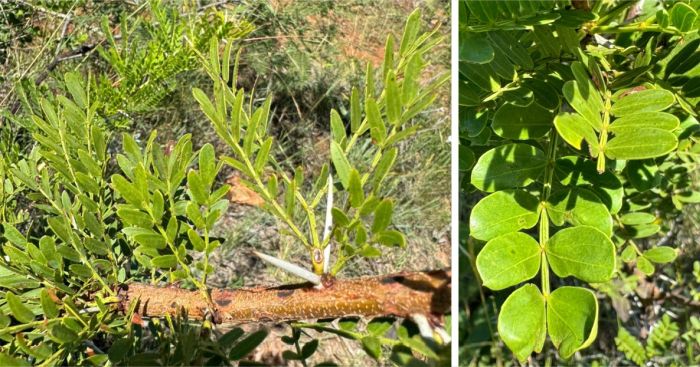
Description
Description
Vachellia sekhukhuniensis is a small tree with a slender stem, growing up to 3.5 m tall. Branches grow parallel to the main stem. Young branches have red-brown bark which hardens and cracks with age. The thorns are 30-50 mm long, greyish white and paired at nodes. It has 5-9 oblong leaflet pairs, the leaflets are large and broad, 8-18 x 3-9 mm, with visible raised veins below. These large leaflets clearly differentiate the Sekhukhune thorn from other closely related species. Bright yellow pompon flower heads, 6-16 mm in diameter, are borne on new growth from late spring to midsummer (October to January), followed by the dehiscent, flat, sickle-shaped, 4-10 seeded seed pods, 4-6 x 2-4 mm, green turning reddish brown to black with maturity and splitting open to reveal small seeds that can be harvested from late summer to autumn (February to April).
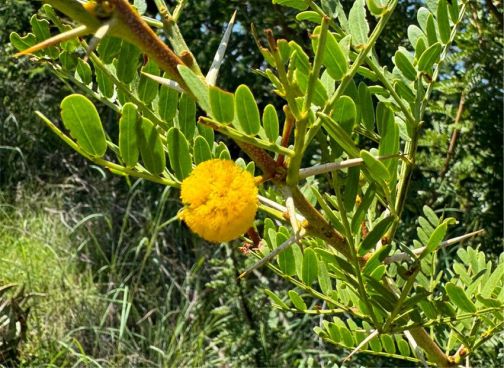
The Sekhukhune thorn’s large leaflets may cause it to be confused with Albizia anthelmintica when not in flower. When compared to Vachellia robusta, which occurs in the surrounding region, its leaflets are more than twice the size, and its flattened, papery pods are much different from the robust, woody pods of V. robusta. And when compared to Vachellia karroo, the leaflets of V. sekhukuniensis are up to ten times larger, and its pods are wider and not constricted between the seeds. There are also marked differences in the flowers and flowering time. When compared Vachellia exuvialis which also occurs in the area, again the Sekhukhune thorn’s leaflets are much larger, and its pods are not covered in glands nor are they sticky.
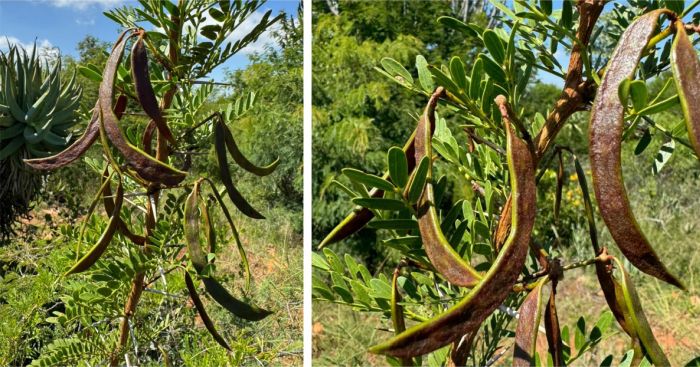
Conservation Status
Status
Vachellia sekhukhuniensis is assessed as Critically Endangered (CR) in the SANBI Red List of South African plants due to threats it faces in its natural habitat with the primary threat being subsistence farming, followed by trampling and overgrazing and it may be at risk from over harvesting for firewood and building materials. Mining in the region is also of concern. Seeds have been collected by the Millenium Seed Bank Partnership, South Africa, and are safely banked in the Millennium Seed Bank, Kew, in the United Kingdom, as insurance and back-up for future restorations and reintroductions in case anything happens to the current population. Half of the collection will be withdrawn from the Millennium Seed Bank and banked in the SANBI seed bank when it is developed and running. Living collections are to be curated at Thohoyandou National Botanical Garden in Limpopo Province, South Africa.
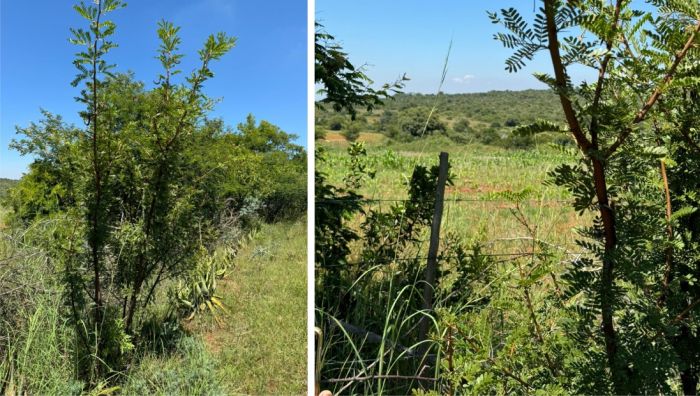
Distribution and habitat
Distribution description
Vachellia sekhukhuniensis is endemic to South Africa, confined to only one known location in northern Sekhukhuneland, in Limpopo Province, where it grows in full sun on a flat topped quartzite mountain, in open woodland and wooded grassland on quartzite ridges, in Ohrigstad Mountain Bushveld, experiencing hot summers and warm winters.
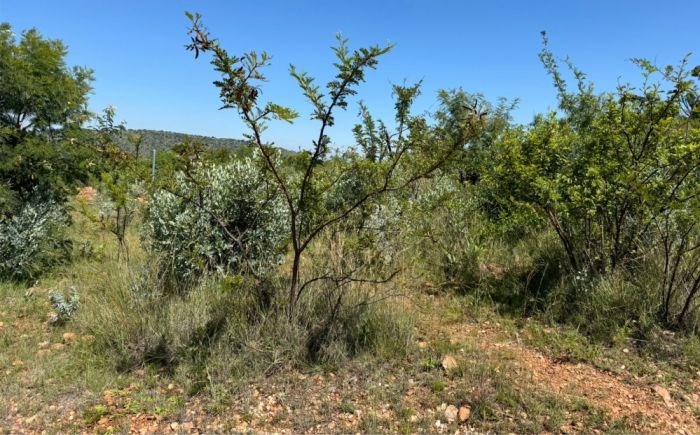
Derivation of name and historical aspects
History
The genus Vachellia is named after Rev. George Harvey Vachell (1789–1839), who was a chaplain to the British East India Company in Macau and a plant collector in China. The species is named for its place of origin, sekhukhuniensis meaning ‘from Sekhukhuneland’. The genus Vachellia contains 163 species, 83 are found in Africa, Madagascar and the Mascarene Islands, 52 in the Americas, 32 in Asia, and 9 in Australia and the Pacific islands. Thorn trees are members of the legume family, Fabaceae, ranked the third largest family among angiosperms after the orchid family (Orchidaceae) and the daisy family (Asteraceae), consisting of more than 700 genera and 20 000 species of trees, shrubs, vines and herbs distributed worldwide.
This species was first collected by W.F. Stuurman in 1972, but remained unidentified until P.J.H. Hurter went looking for plants that matched Stuurman’s specimen, which were found in 2003. Field observations and a comparative morphological analysis confirmed it to be a new species, which was formally described in 2004 as Acacia sekhukuniensis. DNA studies done on the genus Acacia showed that the approximately 1 200 species that were grouped under the genus, were not all descended from the same common ancestor, resulting in the genus being split into a number of new genera. The name Acacia was conserved for the Australian species, despite it being the original name for an African species and despite the decision being challenged by African botanists, and in 2013 all the African acacias were transferred to one of two new genera: Vachellia (those with paired stipular spines at the nodes and no prickles) or Senegalia (those with no stipular spines and often with prickles).
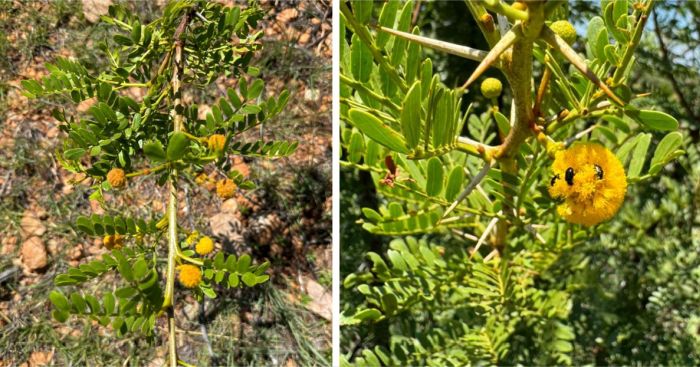
Ecology
Ecology
The yellow pompon flower heads attract bees, butterflies and pollen beetles. Livestock feed on the seed pods and may distribute seeds in their dung. Birds make nests on the trees as the thorns protect them from predators. Thorns have evolved as a defense mechanism against herbivores. Rust fungi, such as Cephalotelium sp. commonly known as Vachellia gall rust, are associated with the crown. According to the Plant Protection Research Institute, gall rust fungus does not directly kill the host plant, but can cause it to succumb to other stress factors such as drought stress, that might eventually kill it.
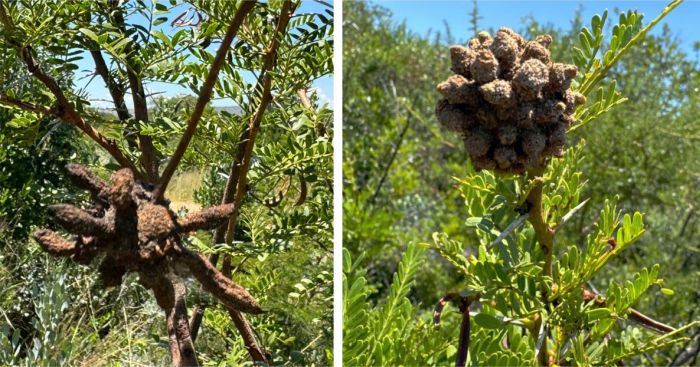
Uses
Use
No traditional uses have been documented, however, the Sekhukhune thorn is known to be used for firewood and for building materials.
Growing Vachellia sekhukhuniensis
Grow
The tree can be grown in well-drained soil in full sun in areas that experience hot summers and warm winters. Ensuring that one gathers mature seeds is the first step in propagating Vachellia sekhukhuniensis. Wait for the seed pods to turn black, split open, and collect the seeds. To increase the chances of germination, soak the seeds overnight in hot water where they will swell up. Sow them in trays in a well-drained seedling mix. Once germinated, transplant into individual nursery bags because they soon develop a long taproot. Water twice a week giving moderate amounts of water. Germination takes 7–15 days, however, seedlings are initially slow growing and should grow faster with the application of a balanced fertilizer.
References
- Boatwright, J.S., Van der Bank, M. & Maurin, O. 2014. Name changes in African Acacia species. Veld & Flora 100(1):33.
- Britannica. Fabaceae. https://www.britannica.com/plant/Fabaceae. Accessed 21 February 2024.
- Hurter, P.J.H. & Van Wyk, A.E. 2004. Fabaceae: A new species of Acacia (Mimosoideae) from the province of Limpopo, South Africa. Bothalia 34(2):103-113.
- Manyama, P.A. 2007. Vachellia sekhukhuniensis (P.J.H.Hurter) Kyal. & Boatwr. National Assessment: Red List of South African Plants version 2020.1. Accessed on 2024/02/06.
- Modimolla, S. 2024. Observation of Cephalotelium sp on Vachellia sekhukhuniensis. Sekhukhune, Limpopo. iNaturalist. Online. https://www.inaturalist.org/observations/198710699.
- Plants of the World Online. Vachellia sekhukhuniensis (P.J.H.Hurter) Kyal. & Boatwr. https://powo.science.kew.org/taxon/urn:lsid:ipni.org:names:77131779-1. Accessed 19/02/2024.
- Schmidt, E., Lötter, M. & McCleland, W. 2002. Trees and shrubs of Mpumalanga and Kruger National Park. Jacana, Johannesburg.
- Serdani, M. 2001. The Acacia gall rust (Uromycladium tepperianum). Plant Protection Research Institute, Agricultural Research Council. https://www.arc.agric.za/arc-ppri/Leaflets%20Library/Uromycladium.pdf.
- Wikipedia. Vachellia. https://en.wikipedia.org/wiki/vachellia. Accessed 19/02/2024.
Credits
Ntsakisi Masia and Adelaide Lekota,
Millennium Seed Bank Partnership, Thohoyandou NBG
and Alice Notten, Kirstenbosch NBG
March 2024
Images by Ntsakisi Masia
Plant Attributes:
Plant Type: Tree
SA Distribution: Limpopo
Soil type: Sandy
Flowering season: Early Summer
PH: Acid, Neutral
Flower colour: Yellow
Aspect: Full Sun
Gardening skill: Easy
Special Features:
Horticultural zones







Rate this article
Article well written and informative
Rate this plant
Is this an interesting plant?
Login to add your Comment
Back to topNot registered yet? Click here to register.